Homemade Sunscreen Spray (Safe for Kids & Adults)
This homemade sunscreen spray is safe for kids and adults, non-greasy and made with all-natural ingredients – perfect for your summer skincare routine.

Homemade Sunscreen Spray
Over the years, I’ve lightened up and shared several sun-protecting skincare recipes like my waterproof sunscreen, after-sun lotion, and tanning oil. Now, it’s the turn of an all-natural sunscreen spray recipe made at a fraction of the cost.
A sunscreen spray is a skincare product that protects the skin from sunburn. Making your own spray sunscreen is challenging. It would be best to understand how important it is for your homemade sunscreen spray to work and offer the protection you need against sunburn.
The Centers for Disease Control and Prevention (CDC) notes that having “a history of sunburns, especially early in life,” can increase the risk of developing skin cancer. Thus, it is important to wear sunscreen that has been tested and proven effective from childhood when exposed to strong sun.
Traditionally, store-bought sunscreens contain harmful ingredients such as parabens, oxybenzone, avobenzone, octisalate, octocrylene, homosalate, and octinoxate.
Not only does this homemade sunscreen spray not contain a chemical sun protection filter, but it’s loaded with active plant ingredients to coat the skin and reflect UV rays off the dermal layers. (like titanium dioxide or zinc oxide, instead of chemicals).
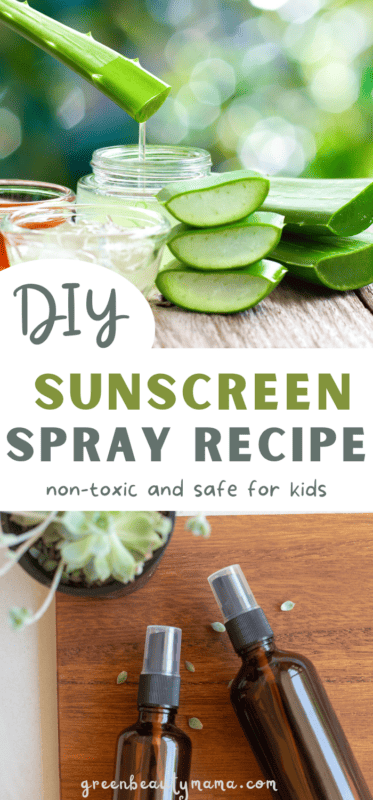
The Ingredients
Coconut oil (fractionated coconut oil) has the best protection and the highest SPF of around 8. It has many benefits for the skin, as it is loaded with antioxidants that help protect the skin from harmful radiation from the sun. BUT, this doesn’t make it a natural sunscreen alternative. You can substitute coconut oil with olive oil.
Aloe Vera has been used for centuries to prevent and treat burns on the skin. While some studies show that it may block roughly 20% of UVs, it’s not a substitute for sunscreen.
Carrot seed oil contains many vitamins, antioxidants, and carotenoids. This natural oil has high SPF.
Raspberry seed oil is another great natural oil for summer skincare recipes. It has a high SPF and can help soothe inflamed skin.
Zinc Oxide is your UV filter. Zinc Oxide is one of the few minerals the EWG recommends as a safe and effective ingredient in homemade sunscreen spray.
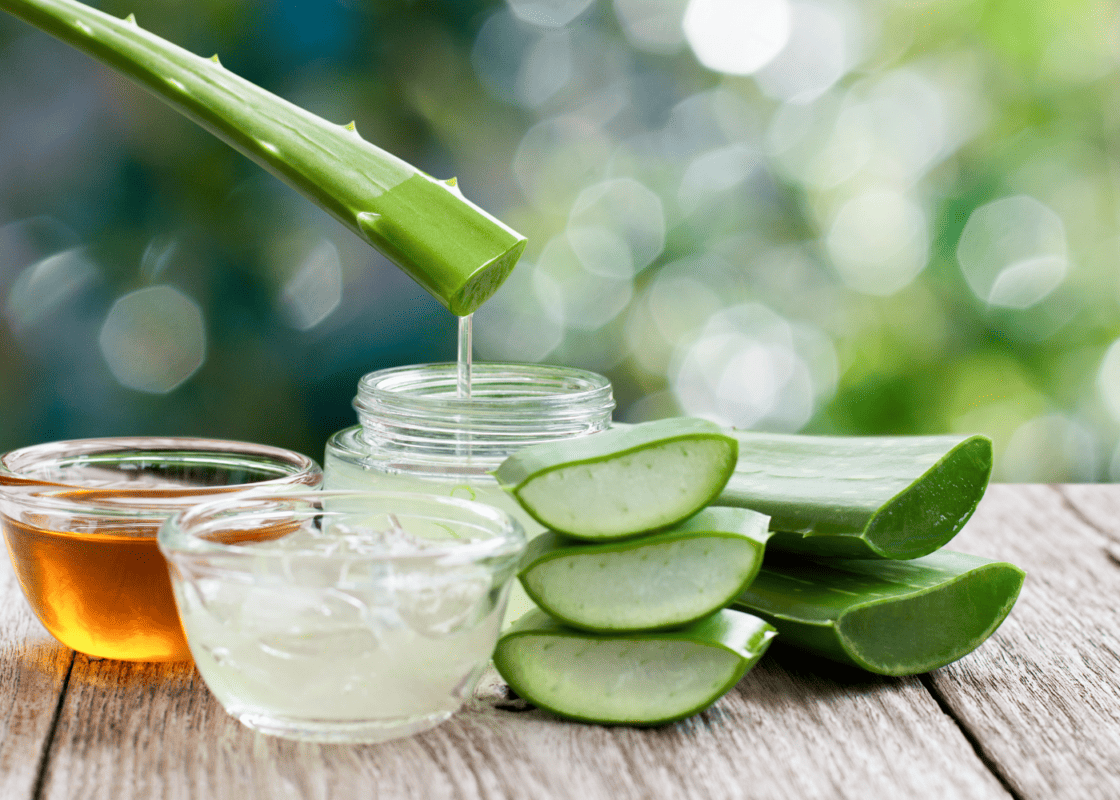
How to make sunscreen spray at home
- 1/3 cup Fractionated Coconut oil
- 1/4 cup pure aloe vera gel (must be 50 per cent or higher pure aloe)
- 15 drops carrot seed oil
- 15 drops red raspberry seed oil
- 10 drops of lavender essential oil
- 2 tablespoons non-nano zinc oxide
Before making this recipe, I recommend putting on a face mask to protect you from inhaling zinc oxide or titanium dioxide. These are perfectly safe on your skin, as they don’t absorb, but they are unsafe to inhale.
Mix all the ingredients and pour them into a spray bottle. You can add more aloe vera gel and a carrier oil such as almond oil, which has SPF properties until the mixture is a sprayable consistency. Store in a glass spray bottle and keep refrigerated for best results.
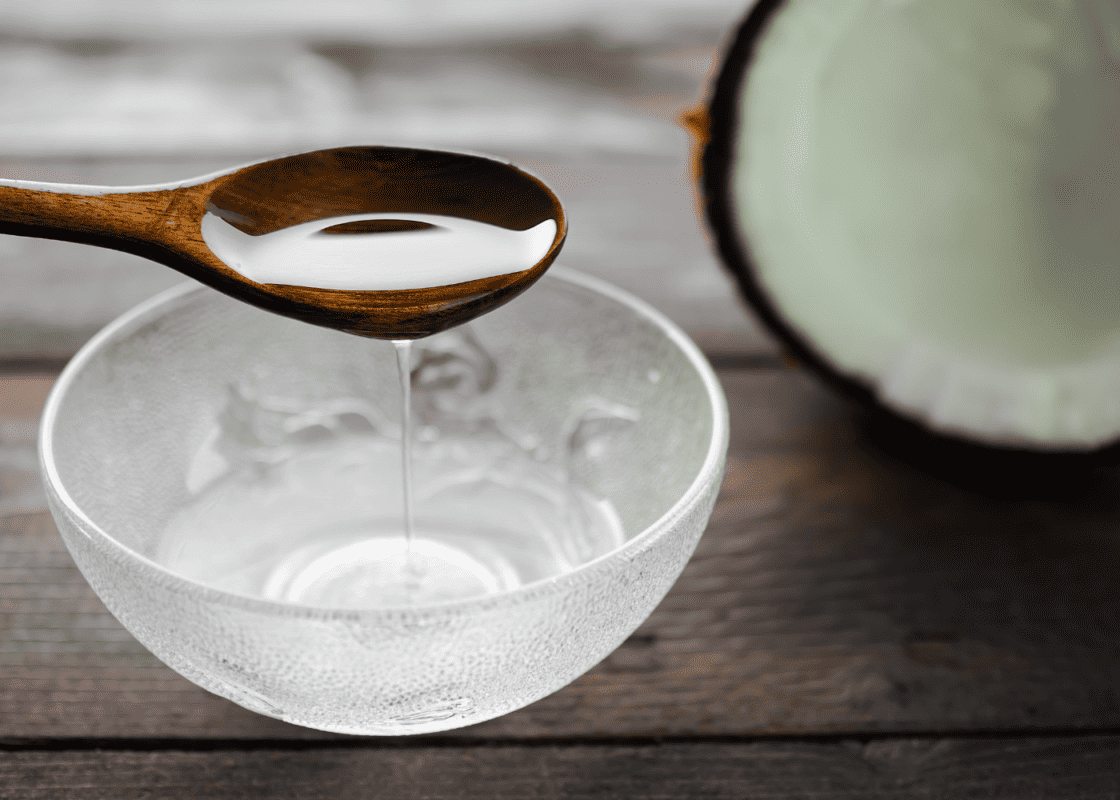
Storage Instructions
Store the homemade sunscreen spray in a cool, dry place, for example, a bathroom cabinet. The homemade sunscreen spray has a shelf life of 4 to 5 months. Discard the product if you notice a change in smell or colour.
How to use a sunscreen spray
Spray a few drops of homemade sunscreen into your palms and apply it to your face, neck, hands, and exposed skin. Sometimes, I don’t apply it again, especially if I’m working or know I will be indoors all day.
If I plan to go to the beach or pool all day, I usually layer my cream-based sunscreen on top for extra protection.
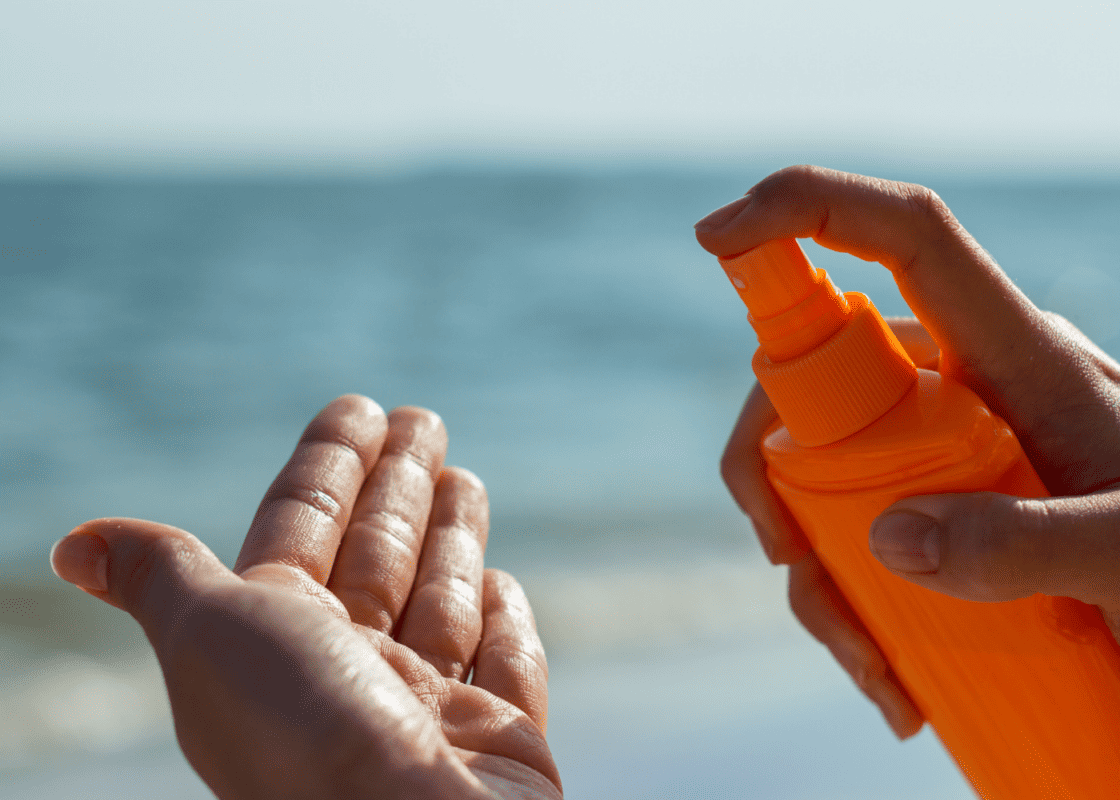

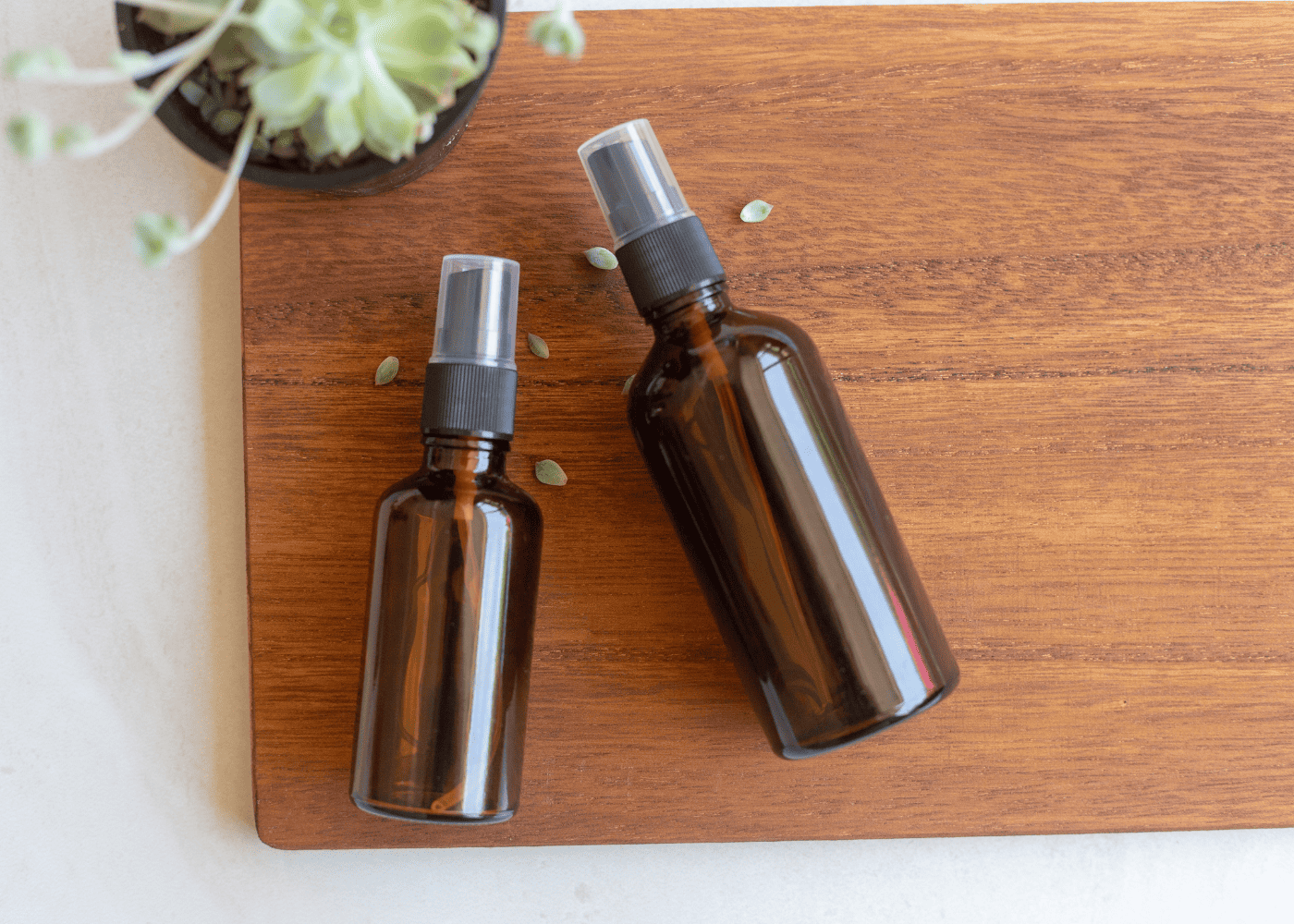
Hi Lora! I’ve been looking for a good spray-on sunscreen, and yours sounds great. Though you probably cannot claim a specific spf, what would you guess it is?
Thank you!
While the SPF of this recipe cannot be guaranteed without lab testing, research suggests it may offer around SPF 20 protection.